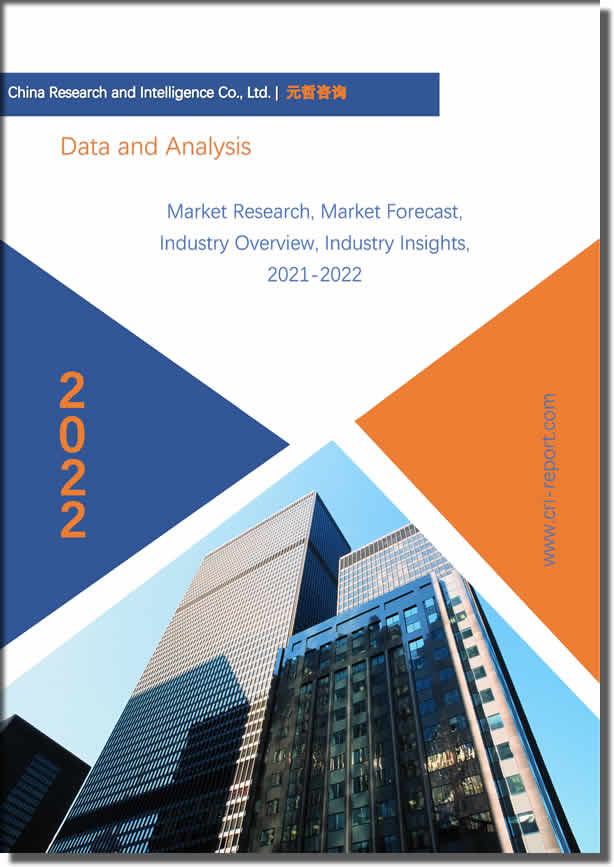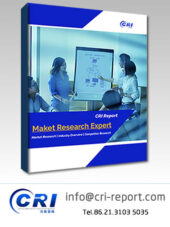Description
Global Ready to Drink (RTD) Coffee Market Analysis and Forecast Report 2030
Product Overview
A subgroup of soft drinks is Ready to Drink coffee, but with proven health benefits, the role differs. The consumption is rapidly rising for Ready to Drink coffee. Tea and coffee have a vital and calming role to play in delivering the same. If it is an office or home or ideal climatic conditions such as winter and rainy seasons, tea and coffee provide the fastest mind-relaxing therapy and enables productivity in the spur of time. In order to satisfy the large customer base spread across geographies, various varieties of RTD tea and RTD coffee products are put on the market.
Market Highlights
Global Ready to Drink (RTD) Coffee Market is expected to project a notable CAGR of 7.65% in 2030
Global Ready to Drink (RTD) Coffee Market to surpass USD 29.8 billion by 2030 from USD 85 billion in 2018 at a CAGR of 7.65% throughout the forecast period, i.e., 2019-30.
A major shift towards Ready to Drink coffee is contributing to increased consumer understanding of the health risks of carbonated beverages. The surge in the health-conscious population who favor the antioxidant property of RTD coffee is another big factor. The strategies of the major players to broaden the market are to tailor health-beneficial goods for women and children. In attracting younger demographics, the positioning of the RTD to the Drink coffee market as leisure items has proven beneficial. Another factor affecting the growth rate of Ready to Drink coffee is the rise in disposable income in developing economies.
Global Ready to Drink (RTD) Coffee Market: Segments
Canned packaging segment to grow with the highest CAGR of XX.X% during 2019-30
Global Ready to Drink (RTD) Coffee Market is segmented by packaging into Bottles, Cans, and Others.PET Bottle emerged as a dominant segment in 2018, accounting for 31.9% of the total industry revenue. Canned packing of all drinks is made more attractive by almost all major players in order to boost the sales of their goods. Also, for easy use, packages in different amounts are made available. Pet bottles are more common than standard glass bottles since modern technology allows these bottles to do more than just carry drinks. Such bottles, apart from being available in economic formats, help to enhance shelf life and preservation. Pet bottles are manufactured in such a way that customers, depending on their requirements, may either heat or cool the coffee. These warm/cool bottles come in a handy ‘grab and go’ size and can be easily used. Products in bottled format can be consumed all at once or can be stored. Caps or lids on these bottles often play an important role in maintaining the beverages’ freshness and fragrance.
Specialty stores segment to grow with the highest CAGR of XX.X% during 2019-30
Global Ready to Drink (RTD) Coffee Market is segmented by Distribution Channel into supermarkets, hypermarkets, Specialist Stores, online stores, and others. Based on the distribution channel, supermarkets/hypermarkets held the largest share of 59.4% in 2018 in terms of revenue and are projected to grow with the highest CAGR in near future. It is expected that the increase in demographic spending, ease, and convenience through supermarket purchases will pave a strong path for RTD coffee producers to penetrate, particularly in developing countries, where large numbers of these stores are being set up. A significant number of producers have captured the interest of the evolution of food service as a distribution channel. Over the forecast period, the growing brand associations with local drinks are expected to drive the market for these drinks. The rising number of RTD tea and coffee products is expected to fuel the market for these products.
Global Ready to Drink (RTD) Coffee Market: Market Dynamics
Key Drivers
Increase in Sales of Coffee in Retail
A number of factors are driving the demand for the RTD coffee market including rising per capita disposable income and growing consumer health awareness. Furthermore, the growing marketing pattern, smart ads, growing features, and strong positioning of RTD tea and coffee also serve as the key drivers of the RTD tea and coffee industry. On the other hand, the growing consumption of freshly ground coffee and rising prices of raw materials could hamper demand growth in the coming years. In terms of creating jobs, the industry is also lucrative. The growing number of variants and market competition, especially from international players, represent the active trend of growth in the ready-to-drink beverage industry.
Growing health consciousness
Over the decades, rapid socio-economic growth has led to an increase in cases of many chronic illnesses, such as heart disease, cancer, and diabetes. Increasing health awareness of chronic diseases among the aging population is boosting customer inclination towards RTD coffee. The rising cost of healthcare makes people aware of the rising costs associated with sufficient medical services. High healthcare-related costs have driven individuals to inculcate self-nutrition and preventive healthcare conduct. This activity will contribute to a rise in demand for RTD tea and coffee, which has many health advantages. Another market factor is customers moving from carbonated beverages, demanding instant energy sources by mixing RTD coffee products with energy drinks.
Restraints
Strict regulatory hurdle associated with the approval for production of infant’s formula
Unpredictable rainfall and a rise in the cost of agricultural inputs have increased the cost of raw materials, rendering the finished product expensive for tea and coffee. The business is considerably limited by higher prices than hot tea and ground coffee. Age-old cultural habits of consuming hot tea and coffee build obstacles to business development. The two largest elements in the cost structure of ready-to-drink tea and coffee processing are raw materials and bottling.
Global Ready to Drink (RTD) Coffee Market: Regional Analysis
Global Ready to Drink (RTD) Coffee Market is segmented based on regional analysis into five major regions. These include North America, Latin America, Europe, APAC, and MENA.
Global Ready to Drink (RTD) Coffee Market in the Asia Pacific accounted for a market share of 41.2% in 2018 the market owing to the factors such as high disposable income, the presence in the area of major players, and the well-developed industries of pharmaceuticals and biotechnology. The factors pushing consumers towards healthier alternatives in terms of comfort food are the increasing obese population, unhealthy eating behaviors among children and adults, busy lifestyles, and tight work schedules. The calorie-conscious customer and the diabetic population are searching in their beverages for alternatives to sugar, which is increasing the rate of preference among them for antioxidant-enriched health drinks. The business is gaining more popularity in the Asia-Pacific region with the convenience factor associated with it. Due to a rise in consumer perception of the health benefits of these products over other soft drinks, demand for the RTD tea and coffee market is expected to increase further in North America and Europe.
Competitive Landscape
Global Ready to Drink (RTD) Coffee market, which is highly competitive, consists of several major players such as Nestlé S.A., Starbucks Corporation, Arla Foodshold a substantial market share in the Global Ready to Drink (RTD) Coffee market. Other players analyzed in this report are The Coca-Cola Company, Suntory Beverage & Food, Lotte Chilsung Beverage Co Ltd, JAB Holdings, Arla Foods, and Asahi Group Holdings Ltd, etc, among others.
Recently, various developments have been taking place in the market. For instance, in January 2018 – Coca-Cola-backed brand-incubation company L.A. Libations has taken a big step into the cold brew space, engaging in a strategic partnership with Southern California-based KonaRed Corporation.
Global Ready to Drink (RTD) Coffee Market is further segmented by region into:
North America Market Size, Share, Trends, Opportunities, Y-o-Y Growth, CAGR – the United States and Canada
Latin America Market Size, Share, Trends, Opportunities, Y-o-Y Growth, CAGR – Mexico, Argentina, Brazil and Rest of Latin America
Europe Market Size, Share, Trends, Opportunities, Y-o-Y Growth, CAGR – United Kingdom, France, Germany, Italy, Spain, Belgium, Hungary, Luxembourg, Netherlands, Poland, NORDIC, Russia, Turkey and Rest of Europe
APAC Market Size, Share, Trends, Opportunities, Y-o-Y Growth, CAGR – India, China, South Korea, Japan, Malaysia, Indonesia, New Zealand, Australia, and Rest of APAC
MENA Market Size, Share, Trends, Opportunities, Y-o-Y Growth, CAGR – North Africa, Israel, GCC, South Africa and Rest of MENA
Global Ready to Drink (RTD) coffee market: Key Players
Nestle S.A.
Company Overview
Business Strategy
Key Product Offerings
Financial Performance
Key Performance Indicators
Risk Analysis
Recent Development
Regional Presence
SWOT Analysis
The Coca-Cola Company
Arla Foods
Lotte Corporation
JAB Holdings
High Brew Coffee Inc.
Asahi Group Holdings Ltd
La Colombe Torrefaction Inc.
Global Ready to Drink (RTD) Coffee Market report also contains analysis on
Global Ready to Drink (RTD) Coffee market segments:
By Packaging
Bottles
Cans
Other Packaging
By Product Type
Cold Brew Coffee
Other RTD Coffee
By Distribution Channel
Supermarket/Hypermarkets
Specialty Stores
Online Stores
Other Distribution Channels
Ready to Drink (RTD) CoffeeMarketDynamics
Ready to Drink (RTD) CoffeeMarketSize
Supply & Demand
Current Trends/Issues/Challenges
Competition & Companies Involved in the Market
Value Chain of the Market
Market Drivers and Restraints
Related Reports: Global Dental Sutures Market Analysis & Forecast 2016-2027



Reviews
There are no reviews yet.